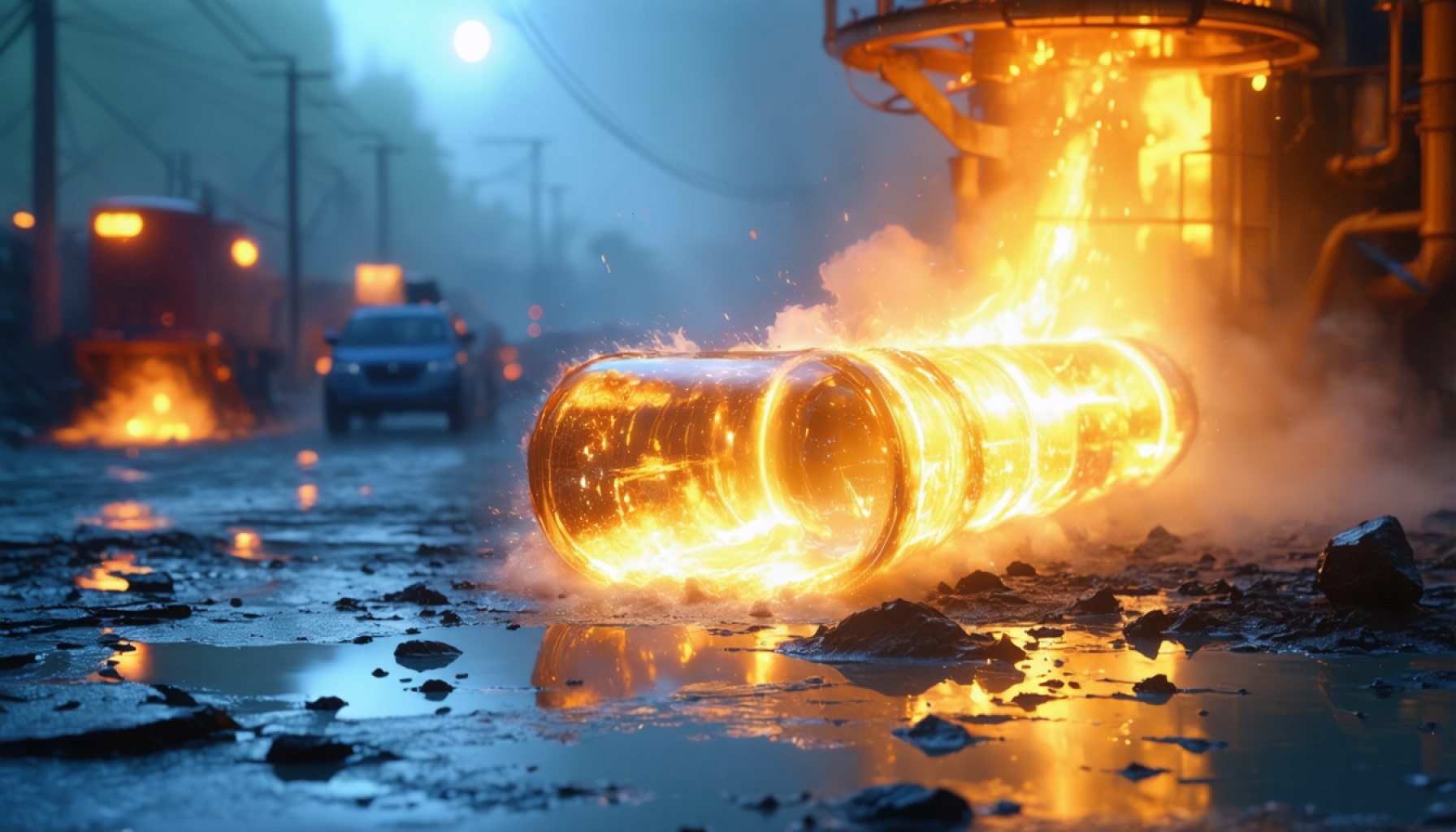- Hydrogen’s potential is shifting from domestic energy use to transforming heavy industries, such as steel and ammonia production.
- Major hydrogen projects face setbacks due to high costs and uncertain markets, causing companies like Fortescue and Woodside to reevaluate their investments.
- The steel industry, responsible for 8% of global emissions, could significantly benefit from hydrogen’s ability to replace coal and reduce emissions.
- Hydrogen also shows promise in producing green ammonia, a crucial fertilizer component.
- Australia is poised to transform its industrial landscape by exporting high-value green products, enhancing its role in global supply chains.
- Efficient hydrogen transport remains challenging, necessitating localized production hubs to reduce costs and improve viability.
- Substantial government initiatives support this shift, emphasizing hydrogen’s role as a strategic industrial asset rather than a universal energy solution.
The vision of hydrogen as the ecological panacea for global energy demands has hit a snag. As South Australia reroutes a massive investment from hydrogen power to rescuing the Whyalla steelworks, it underscores a pivotal realization: hydrogen’s promise may lie more in reshaping industry than powering our homes and cars.
Recent developments echo a growing sentiment: the anticipated hydrogen boom is meeting resistance. Major players like Fortescue and Woodside have pulled back from ambitious hydrogen projects, citing spiraling costs and unpredictable market dynamics. Even international ventures, such as Victoria’s Japanese hydrogen export project, face delays and uncertainties.
Amid these challenges, a more focused narrative emerges. In heavy industries — particularly steel and ammonia production — hydrogen exhibits undeniable potential. Steelmaking alone contributes a staggering 8% of global emissions. Here, hydrogen offers a transformative route, replacing coal and yielding far fewer emissions. The potential to produce green ammonia, an essential fertilizer component, further illustrates hydrogen’s industrial utility.
Australia stands at the cusp of a pivotal industrial shift. By exporting not raw materials, but high-value green commodities like hydrogen-produced iron, the nation could revolutionize its role in global supply chains. This strategy not only promises significant emission reductions but also lucrative returns.
Transport challenges remain; hydrogen’s unwieldy and volatile nature demands localized production hubs. Here, hydrogen enthusiasts see promise: place production near consumption to slash costs and bolster efficiency.
Government initiatives lend weight to this industrial pivot. With billions flowing into green iron funds, hydrogen incentives, and carbon reduction policies, the stage is set for Australia to lead a green industrial revolution. As industries adapt, hydrogen’s role may shift from universal savior to strategic powerhouse, anchoring a cleaner future with industry at its core.
The Untold Truth About Hydrogen’s Industrial Power
Introduction
The initial vision of hydrogen as a universal solution for clean energy is undergoing a crucial transformation. While once heralded for revolutionizing home and automotive energy, this narrative is shifting towards hydrogen’s promising role in reshaping heavy industry. This article delves into the practical reality of hydrogen’s applications and its market prospects.
How Hydrogen Transforms Industry: Real-World Use Cases
Hydrogen’s most potent real-world applications lie in heavy industries:
1. Steel Production: Globally, steelmaking accounts for about 8% of carbon emissions. By using hydrogen instead of coal, emissions can be dramatically reduced. This process, called direct reduction of iron (DRI), produces water instead of CO2, presenting a cleaner alternative.
2. Ammonia Production: Ammonia is pivotal for fertilizer production. Hydrogen enables the creation of “green ammonia,” a more sustainable option that does not rely on fossil fuels.
3. Exports of Green Commodities: Countries like Australia can export hydrogen-produced iron and ammonia as high-value green commodities, changing their roles in global trade.
Market Forecasts & Industry Trends
While there are challenges, industry experts predict significant growth in hydrogen applications for heavy industry:
– Market Growth: According to a report by the International Energy Agency (IEA), the demand for hydrogen in industry could grow threefold by 2030.
– Investment Trends: Billions are being invested in hydrogen production facilities, particularly in countries with existing expertise in steel and ammonia production.
Controversies & Limitations
Despite its potential, hydrogen faces notable challenges:
– Cost and Infrastructure: The cost of producing hydrogen is still high, and substantial infrastructure overhauls are needed.
– Safety Concerns: Hydrogen is highly flammable, presenting storage and transportation challenges.
Features, Specs & Pricing
Hydrogen specifications relevant to industry include its high energy density and zero emission potential. Presently, the cost of hydrogen production varies but generally exceeds that of fossil fuels, a key barrier to rapid adoption.
Security & Sustainability
Hydrogen production via renewable energy sources greatly enhances sustainability. However, reliance on natural gas for current hydrogen production (gray hydrogen) negates environmental benefits. Transitioning to green hydrogen, derived from electrolysis using renewable energy, remains a sustainability goal.
Tutorials & Compatibility
Industries interested in hydrogen need to evaluate:
– Infrastructure Readiness: Assess compatibility with existing industrial processes and facilities.
– Transition Strategies: Implement staff training on new technologies and safety protocols.
Pros & Cons Overview
Pros:
– Significant reduction in emissions compared to fossil fuels.
– Potential to create high-value export products.
Cons:
– High initial investment required.
– Transportation and storage complications due to hydrogen’s properties.
Actionable Recommendations
– Invest Locally: Establish hydrogen production near industrial usage to reduce costs.
– Policy Development: Encourage government incentives for transitioning to hydrogen.
Conclusion
Hydrogen’s future as a transformative force in heavy industry seems bright, driven by its capacity to significantly reduce emissions and develop new markets for green commodities. However, concerted efforts in investment, infrastructure development, and policy-making are crucial to overcoming existing challenges.
For further insights into hydrogen’s potential and global energy trends, visit the International Energy Agency and U.S. Department of Energy.


